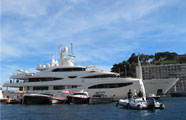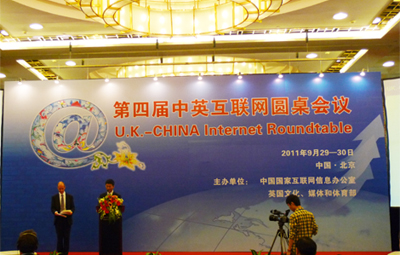Riding the theme park boom
Updated: 2011-09-30 09:16
By Dennis Speigel (China Daily)
|
|||||||||
New projects should follow a plan of product evolution with fun as underlying theme
During the past two decades, China has attempted to enter the global theme park industry, but there have been several starts and stops. But with its vast size and population, there is no doubt that the market potential for the theme park industry in China is huge.
During the past 45 odd years that I have spent in developing, designing and operating theme parks globally, the one common denominator is that people around the world want to have fun.
There is no better way to accomplish this than through theme parks. Emerging nations have realized the importance and embraced the theme park concept.
The evolution of theme parks around the world in the past 40 years has largely been because of the stimulated economies. As a result of the Internet, people are now more connected and exposed to theme parks worldwide.
The theme park "wish list" of people in emerging countries often outweighs the traditional product evolution of a new park.
So it is essential that when theme parks are planned for new markets, it should follow a plan of "product evolution".
We believe it is the proper approach to build and evolve the product base first and then entice visitors to come back on a year-to-year basis. Providing new experiences every year is clearly a foundation of the theme park industry.
This issue is very important considering that China has had several starts and stops in theme park roll-outs. Recently, it was announced that a moratorium was placed on theme park development across China as too many parks were being planned, and many were perceived as land scams.
Something similar to this occurred in the early 1990s when theme parks began to evolve in China at too fast of a pace. The moratorium then lasted for nearly three years.
All of these issues raise the question of what are the catalysts needed for theme park development. We believe that China needs projects that are well-planned and well-thought-out to handle future market demand and economics.
New theme park developments must follow the traditional feasibility study guidelines, including:
To determine how the site - proximity to market base, accessibility, visibility - will impact the project's potential.
To make sure the concept matches global trends and the local marketplace.
To determine a realistic supportable resident and tourist market, and examine how their characteristics will impact the project.
To study the industry - history, current trends, expected future trends - to see how the project will be impacted.
To analyze other similar projects for determining the project's potential and look at the competitive environment locally.
To properly apply penetration rates to determine attendance.
To utilize estimated spending in order to determine potential financial yield and potential investment levels.
As China continues to properly position itself for the theme park industry, it is important to understand that this industry in other countries, mainly the United States, has evolved over a period of 60 years or more. This has involved ups and downs.
It has also run the gamut of small amusement parks to family entertainment centers to mega theme parks and destination resorts. Through it all, the US amusement industry has remained resilient. The secret? Find out what drives people to have fun, and offer that at a reasonable price in a safe environment.
Creating themes that allow people to experience a world not part of their day-to-day existence is important. To do this, companies must find the right market and the right site, and then get experts in the field to provide the leadership needed to create the right product.
The author is president of International Theme Park Services Inc, a global consulting firm based in Cincinnati, Ohio, the US.
(China Daily 09/30/2011 page7)










